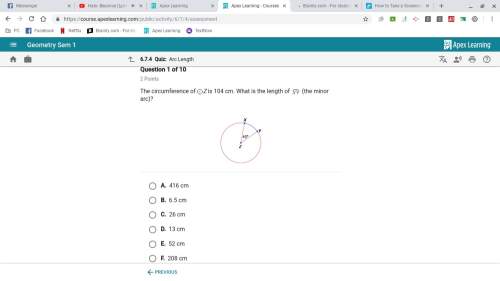The first order linear differential equation
mv' + bv = mg
is a simplified description o...

Mathematics, 17.02.2020 19:29 tttyson
The first order linear differential equation
mv' + bv = mg
is a simplified description of the motion (velocity) of an object of mass m dropping vertically under constant gravitational acceleration g and linear air resistance (viscous friction) -bv. Assuming the object begins its motion from rest, and at an initial height h from the surface of the earth:
a) Calculate the velocity of the object as a function of time using the Laplace transform approach.
b) Does the object reach a terminal velocity? If so, what is this terminal velocity? Note that the terminal velocity is the (constant) velocity reached after a sufficiently large time.
c) Compare the solution obtained for velocity in a) with the solution for the case where b = 0 (free fall under gravity without friction). Provide rough sketches of the solutions for both cases.

Answers: 3
Another question on Mathematics

Mathematics, 21.06.2019 17:20
If you are just building your payment history, how many points from a perfect score will you possibly miss?
Answers: 1

Mathematics, 21.06.2019 19:40
The owners of four companies competing for a contract are shown in the table below. if a report is released that advocates company b, which of the people having funded the report should result in the most skepticism? company owner of company company a jake adams company b company c company d debby smith henry rose rhonda baker o a. jake adams o b. rhonda baker o c. debby smith o d. henry rose
Answers: 2

Mathematics, 21.06.2019 21:30
Aboard 60 in. long is cut two parts so that the longer piece is 5 times the shorter. what are the length of the two pieces?
Answers: 1

Mathematics, 21.06.2019 21:30
Yesterday, george drank 1 small bottle and 2 large bottles, for a total of 1,372 grams. the day before , he drank 1 small bottle and 1 large bottle, for the total of 858 grams. how many grams does each bottle hold?
Answers: 1
You know the right answer?
Questions

Arts, 23.09.2019 09:30

History, 23.09.2019 09:30


Mathematics, 23.09.2019 09:30

Mathematics, 23.09.2019 09:30


History, 23.09.2019 09:30

Biology, 23.09.2019 09:30

Chemistry, 23.09.2019 09:30



History, 23.09.2019 09:30

Physics, 23.09.2019 09:30



Mathematics, 23.09.2019 09:30

History, 23.09.2019 09:30

History, 23.09.2019 09:30

Mathematics, 23.09.2019 09:30

Mathematics, 23.09.2019 09:30




